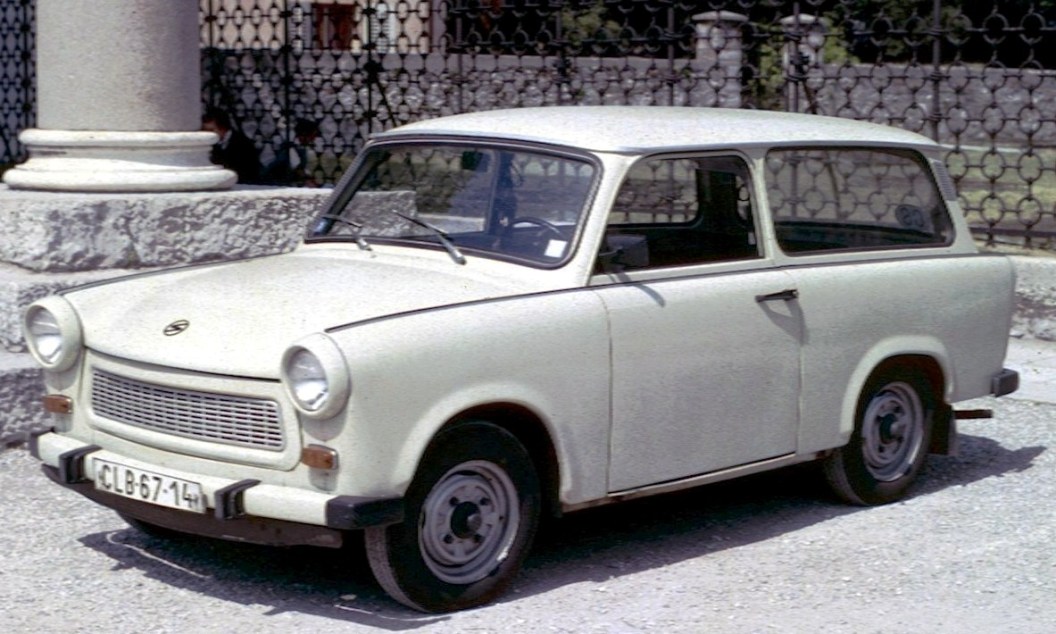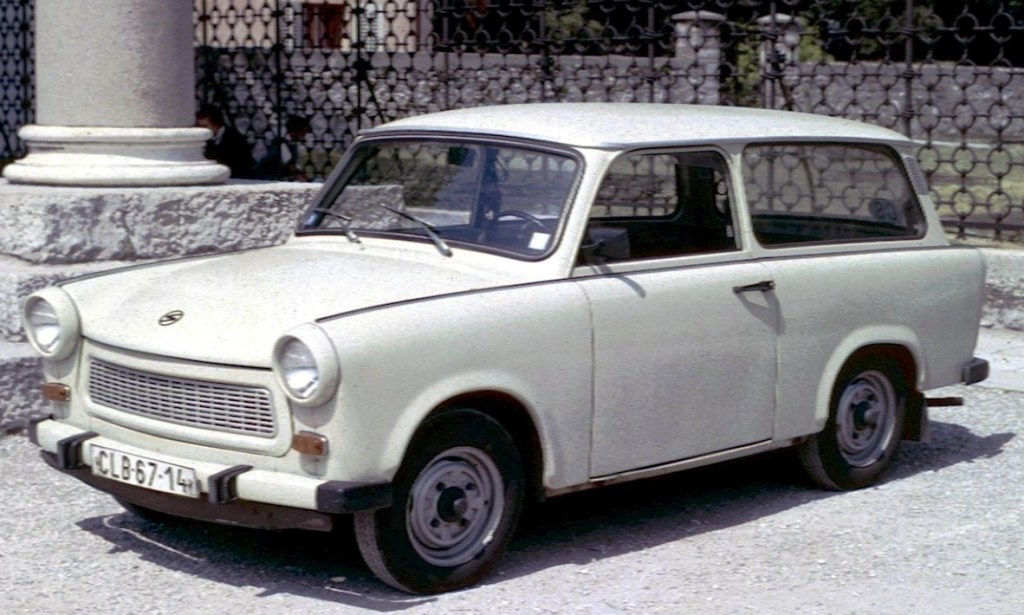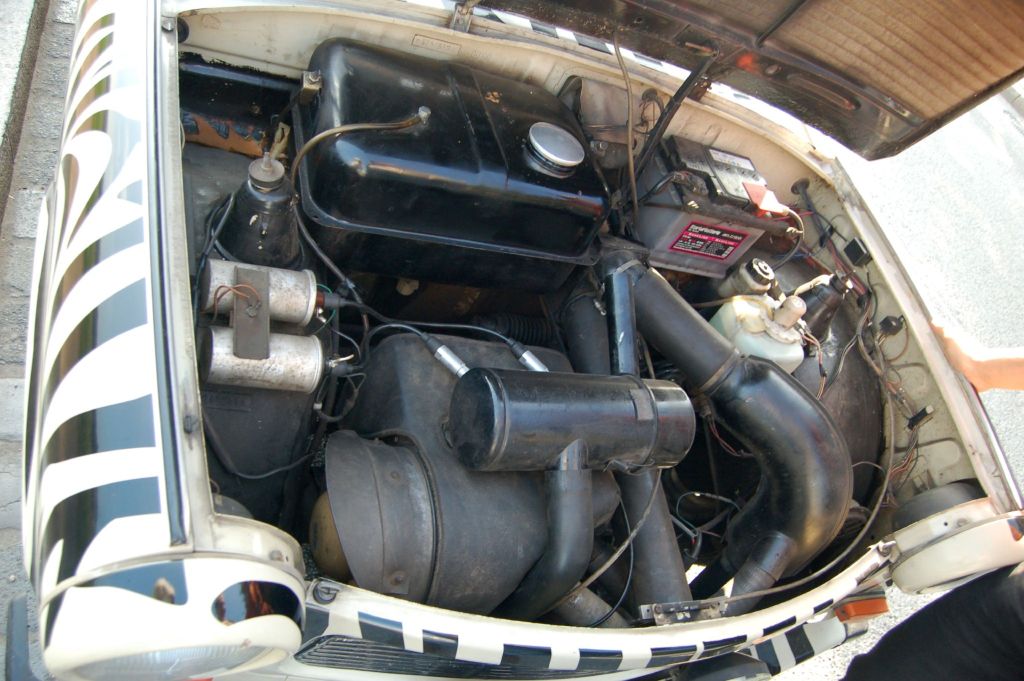In the German Democratic Republic, better known as East Germany, there wasn't a lot of money to go around. A wall was built separating East from West, and a Communist state was established. Typically under Communism, wealth is distributed among the poor. Except for this time, there was no property to be distributed, and everybody was poor.
Car ownership seemed like an unobtainable goal. West Germany had their Beetles, but East Germany couldn't get them as nobody could afford them, and tension between the two nations meant virtually no trade between the two. The only cars in East Germany at the time were imported Ladas and GAZes, usually driven by the police or government officials. Or, you could have a Wartburg, which was a luxury brand before the mid-1960s, if you were very high up in the GDR's hierarchy. It became apparent that people needed cars, so the publicly owned VEB Sachsenring stepped in in the late 1950s.
In 1957, they released the Trabant. It was initially powered by a 500cc two stroke I-2 engine, up until 1962, when it was upgraded to a 600cc unit. This gave it 26 horsepower, and a top speed of 62 miles per hour. It took twenty-six seconds to reach this speed. It had a steel monocoque chassis, and body made from a thermoplastic containing recycled cotton. It was hilariously under-equipped as well, not even having a gas gauge. On the base model, you had a stick that you can dip into the gas tank which lay right under the bonnet. If you had a top-of-the-range model, it came attached to the gas cap. So fancy.
This car had many reasons to be criticized. Given the lack of better options in East Germany at the time, nobody cared about its faults. It was somewhat innovative. It featured a transverse engine layout and front wheel drive, which was rare for this day. This design is used in literally every hum-drum car today, and the Trabi had this technology long before anyone else.
Over its incredible 31-year production run, 3.7 million cars were built, and a good number were imported. After the fall of the USSR in 1991, Trabis were fitted with a Volkswagen Polo engine as to catch up with the times. Unfortunately for the Trabant, it was too little, too late. The Trabant's cheap bodywork and lack of serious changes since its 1957 debut mean it didn't bode well with the suddenly massive market at the fall of the Soviet Union. There were numerous better options than the Trabant, and nobody wanted a car that has been fundamentally the same since 1957. Sadly, with the fall of Communism came the fall of East Germany's beloved Trabi.
The Trabant was created with a simple purpose: motorize East Germany. It did that very well, and in the process created an icon completely by mistake. No, it wasn't as good as the Volkswagen Beetle. Yes, it was made out of recycled cotton. Yes, it was slower than a child's tricycle. But, in spite of all its problems, it was a very likable little car. A car doesn't have to be good to be great.
Read More: HOW CHEVY IS TRYING TO CAPTURE THE HEART OF AMERICA






